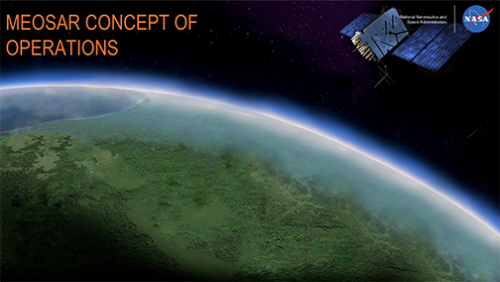Whether you’re talking about a confused adult, a lost child, a hiker in the mountains or even an astronaut in distress, having the world’s best technology available can be the difference between life and death during a search and rescue (SAR) mission.
When a Russian Soyuz rocket carrying a new U.S.-Russian crew to the International Space Station failed during its ascent last October, sending its crew capsule falling back toward Earth in a ballistic re-entry, it was critical that the search and rescue team had the best resources available to locate and reach the landing site and ensure the safety of both crew members.
NASA astronaut Nick Hague and cosmonaut Alexey Ovchinin were aboard and the pair were due to join the three-person Expedition 57 crew already aboard the International Space Station. But something went wrong minutes after liftoff, sending the Soyuz capsule into a ballistic re-entry, NASA officials said.
Hague and Ovchinin were taken from their emergency landing site to Moscow. In a statement, NASA Administrator Jim Bridenstine confirmed at that time that he had been informed the two crewmembers were safe.
Upgraded SAR technology is credited with playing an integral role in this successful recovery mission, and NASA officials expect that some time in 2019 individuals around the world will be able to take advantage of these very same powerful beacons to aid in helping save lives.
Dr. Lisa Mazzuca, NASA Search and Rescue Mission Manager, gave a presentation on the topic at the GPS PNT Advisory Board Meeting last month in Redondo Beach, California.
Mazzuca’s presentation on SARSAT MEOSAT Status can be viewed here.
She explained how NASA now has the ability to detect and locate emergency beacons incorporated into many current and planned GNSS satellites. NASA has continued leading development and refinement of this capability for decades, but the high profile example of how it was used in locating the capsule after October’s aborted Soyuz launch has given both NASA and this technology upgrade a big boost.
She recently told Inside GNSS how this project impacts her work and how important it can be going forward.
“Having spacecraft that can write history books and science, and seeing a system that can actually save lives really was the deciding factors for why I sought this offer,” she said of her position with NASA. “We really saw that there was a need to bring the old program — the program is almost 40 years old – and add some technology relevance to it to be able to save lives. I think I can say I actually identified with this project.”
In short, the main key upgrade to the system was switching from a decades-old Low Earth Orbit (LEO) solution to a Medium Earth Orbit (MEO) solution that takes advantage of multiple satellite constellations.
“So it really is up to us to innovate and develop these new technologies that improve search and rescue hardware not just for national use but also for international use for emergencies,” Mazzuca explained. “So really the team sees this program as three legs. You’ve got the beacons themselves, but you’ve also got the space segment and then you’ve got the ground segment.”
The switch to the MEO solution not only provides better location accuracy, but the multiple aircraft moving around the signals also allows the ability to mitigate terrain blockage, so “masking” can be eliminated. With the older systems, for example, a beacon on a side of a mountain might be blocked.
The large investments by NASA seem to be paying off, according to Mazzuca.
“When you put new payloads on spacecraft that are in a different orbit, you also have to build a ground station to receive signals,” she said. “So we did both at the same time. So that we then convinced ourselves that we could now get near-instantaneous detection and location at the same time, globally, 24 hours a day unlike the old system. There are many benefits to moving up to MEO orbits onboard constellations that have 23 spacecraft in the constellation when they’re fully built.”
As more payloads go up to MEO, the SAR coverage continues to improve. NASA reports that payloads for Galileo, GLONASS and recently BeiDou will only help SAR efforts around the globe.
“With so many spacecraft up there it really creates a robust space signal and it’s highly redundant for us,” Mazzuca said. “There are so many others up there that the coverage is very robust. And the U.S. works with over 40 countries, to make sure that anyone can be found that has these beacons.
“We welcome other space signal providers internationally, that’s why you now have…internationally we’ll have 70-plus payloads with these SARs on board. It’s powerful.”
Now that the world has seen how valuable these Advance Next Generation Emergency locator (ANGEL) beacons can be, the next step is to have them become internationally certified in mid 2019 for use and become the first commercially produced second-generation beacons in the world, NASA states.
“NASA recognized that if you now build a beacon that can maximize this new geometry for us…these beacons are meant to capitalize on the MEOSAR segment which improved system performance,” Mazzuca concluded, “So really what that means is there is so much more power. We want to take advantage of technology that is 40 years newer.”





